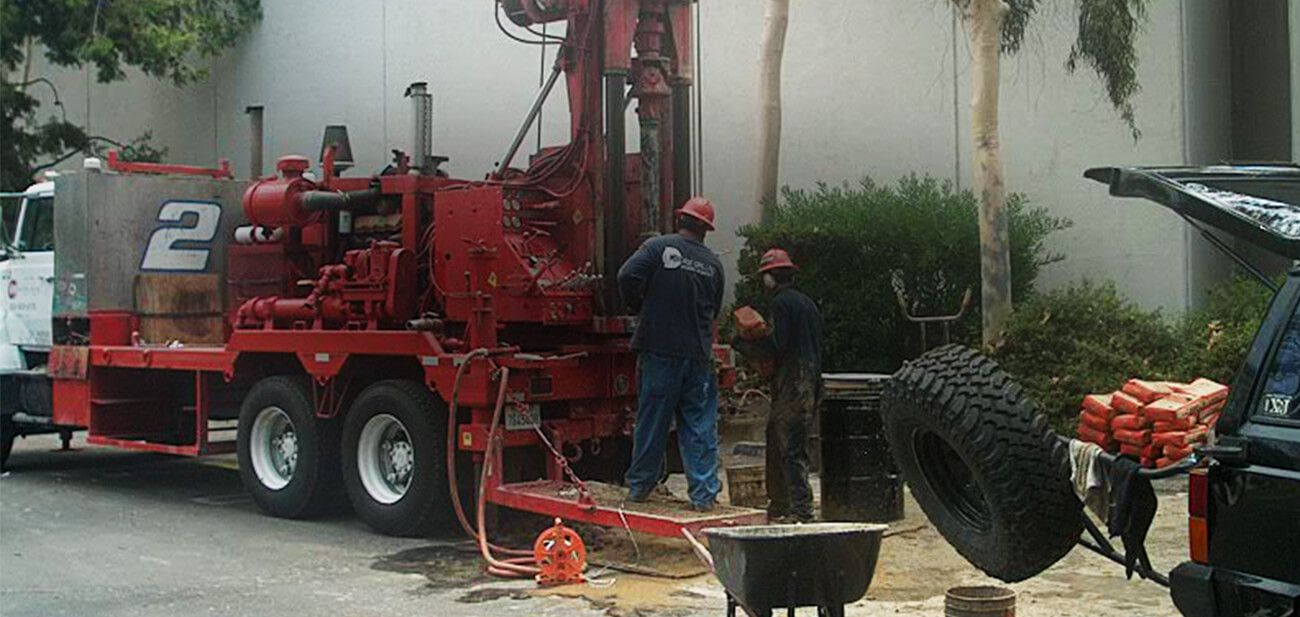Exactly How to Integrate Geotheta into Your Geotechnical Engineering Projects
Exactly How to Integrate Geotheta into Your Geotechnical Engineering Projects
Blog Article
Diving Into Geotechnical Providers: the Essential Duty of Soil Evaluation, Earthquake Danger Analysis, and Geosynthetics in Structure Sustainable and Safe Frameworks
Soil analysis, earthquake threat analysis, and the application of geosynthetics are important parts that ensure the honesty and long life of buildings. By understanding the make-up of the dirt, forecasting seismic dangers, and integrating innovative products, engineers can mitigate risks and boost the durability of infrastructure.

Relevance of Soil Analysis
Recognizing the importance of soil analysis is critical in guaranteeing the architectural integrity and stability of any type of construction job. Dirt evaluation provides vital details about the soil structure, toughness, and possible risks that may influence the foundation of a structure. By carrying out complete dirt evaluation, designers can determine the suitable foundation style, building and construction approaches, and essential precautions to minimize any type of possible threats.
One of the key factors dirt evaluation is essential is its duty in recognizing dirt homes that might affect the stability of a structure. Factors such as dirt bearing ability, negotiation features, and water web content can considerably affect the architectural performance of a construction project. Without proper soil analysis, the foundation may go to threat of clearing up unevenly, bring about architectural damages and even collapse in time.
Furthermore, soil evaluation aids in analyzing the danger of natural disasters such as landslides, floodings, or quakes. By comprehending the soil's actions under various conditions, engineers can apply appropriate steps to boost the strength of the framework and make sure the security of occupants. geotheta. In verdict, soil evaluation is a fundamental step in the building process that ought to never ever be ignored
Assessing Earthquake Risks
Offered the important role of soil analysis in identifying architectural stability, it is essential to additionally evaluate quake threats when planning and creating buildings and facilities. Quake risk evaluation entails assessing the possible seismic risks that a website might face based upon its area and geological qualities. This process helps designers and designers understand the level of risk positioned by quakes and help in developing frameworks that can endure such occasions.
Assessing earthquake dangers typically includes studying historic seismic task in the area, identifying the website's closeness to geological fault, and assessing the soil structure to forecast just how the ground will certainly react to seismic waves. By performing a complete quake threat analysis, designers can implement suitable reduction actions, such as incorporating seismic-resistant design features into buildings, to improve their strength against earthquakes.

Function of Geosynthetics
Geosynthetics play an important role in improving the efficiency and longevity of civil engineering structures. One crucial element of geosynthetics is their support capacity, where they can boost the strength of soils, giving enhanced support for roads, embankments, and keeping walls.
They are additionally utilized in drainage applications to help with the reliable flow of water, preventing saturation and disintegration of soil. In enhancement to their technical functions, geosynthetics are valued for their sustainability, as they can reduce the requirement for natural sources and lower building costs.
Structure Sustainable Frameworks
The implementation of eco conscious techniques in construction is essential for promoting the development of lasting frameworks. Building lasting structures entails utilizing materials and layout techniques that lessen environmental influence, reduce energy intake, and promote long-lasting strength. Incorporating lasting techniques such as using recycled materials, maximizing her comment is here energy effectiveness, and executing green building qualifications like LEED can significantly improve the ecological efficiency of a structure.
One secret facet of structure lasting structures is the effective use sources. This includes developing buildings that make the most of natural light, ventilation, and insulation to minimize the dependence on artificial illumination, heating, and cooling systems. Furthermore, incorporating renewable resource sources such as photovoltaic panels or wind generators can better lower the carbon impact of a structure while additionally possibly lowering long-term power prices.
Moreover, sustainable structures often prioritize water conservation by incorporating features like rainwater harvesting systems, low-flow components, and drought-resistant landscape design. By taking on these environmentally pleasant techniques, building and construction jobs can not just lower their environmental impact yet additionally add to producing healthier and more resistant constructed settings for future generations.
Ensuring Security in Building
In the world of lasting construction methods, a fundamental concern is making certain the safety of all workers entailed in the building process. Security in building and construction encompasses different facets, consisting of the use of appropriate individual protective devices (PPE), adherence to safety and security protocols, routine training on danger acknowledgment and reduction, and the implementation of emergency situation feedback strategies.

Final Thought
Finally, soil analysis, quake risk assessment, and the usage of geosynthetics play crucial functions in making certain the sustainability and safety of structures. By recognizing the properties of soil, assessing quake threats, and making use of geosynthetics for support, engineers can develop frameworks that are both durable and resilient. It is essential for construction specialists to prioritize these geotechnical services to produce lasting and risk-free structures for the future.
Dirt evaluation, quake threat analysis, and the execution of geosynthetics are vital components that make sure the honesty and long life of structures. Dirt evaluation supplies vital info concerning the dirt structure, stamina, and prospective dangers that may affect the foundation of a structure.One of the primary factors dirt evaluation is crucial is its function in determining soil homes that could impact the security of a structure.In final thought, soil analysis, quake threat analysis, and the use of geosynthetics play important roles in ensuring the sustainability and safety and security of frameworks. By comprehending the residential properties of soil, assessing quake dangers, and using geosynthetics for reinforcement, designers can build structures that are both durable and durable.
Report this page